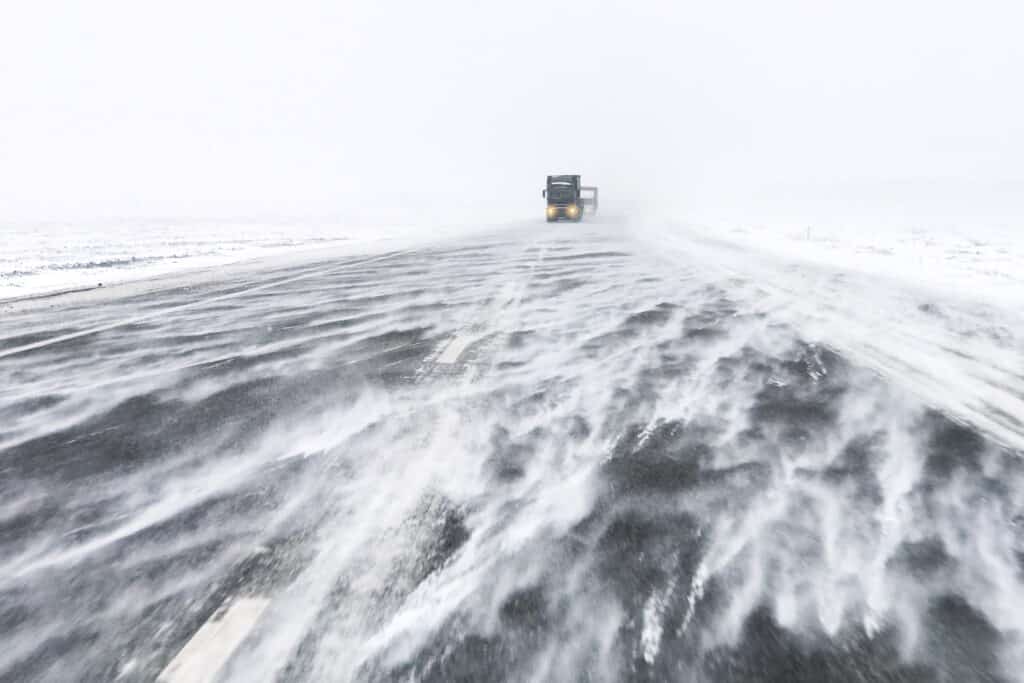What was the biggest March snowstorm in Alabama’s history?
When chief meteorologist James Spann went on air to declare the pending March storm, people thought he was crazy. The broadcast was three decades ago and came right before Alabama was hit with its strongest storm today. The blizzard brought hurricane-force winds, lightning, and 12 hours of record-breaking snowfall. With roofs collapsing and power lines going down, storm damages cost around $50 million. There were also 14 fatalities from exposure.
This unforgettable weather event lives vividly in the minds of many Alabama residents. And now you can learn what it was like to endure the blizzard too. So follow along as we uncover all the details of the biggest March snowstorm in Alabama!
Alabama’s Biggest March Snowstorm
On March 12th, 1993, a cyclonic storm formed over the Gulf of Mexico. Heavy snowfall, dangerously high winds, and freezing temperatures stretched from Canada to Honduras as the cyclone moved through the Gulf of Mexico and into the eastern United States. This unusual weather event is called the “storm of the century,” the “’93 superstorm,” and the “great blizzard of ’93.” The 1993 storm was also the biggest March snowstorm in Alabama’s history.
How cold was it? The storm of the century brought bone-chilling temperatures of -12° F. Putting it in perspective, anything below 46° F is chilly. Freezing and frost occur anytime temperatures drop below the freezing point of water, which is 32° F. When you reach negative temperatures, things go from freezing to life-threatening.

©river34/Shutterstock.com
Understanding the Impact of the March Snowstorm
All of Alabama’s 67 counties experienced snowfall during the March snowstorm. There were 20 inches of snowfall at Walnut grove, 17 inches at Valley Head, and 9 inches in Thorsby. Birmingham, Alabama, received 10.3 inches of snow, and most of the state experience at least 2 inches of snowfall. Some areas experienced less snowfall, like Atmore and Robertsdale, coming in at 2 inches. But even the areas that didn’t have a lot of snow were still impacted by the cold temperatures and high winds.
Devastating Impact of the Blizzard
The monster storm was as strong as a category 3 hurricane. The high winds caused parts of Birmingham, Alabama, to experience snow drifts that were 5 to 6 feet deep. Traffic accidents began to rise, forcing the state to close multiple highways and interstates. There was so much snow it was impossible to tell what road was and what wasn’t.
Countless travelers were stranded in the freezing weather, and Alabama residents were called on to help. News stations broadcast requests for able bodies with four-wheel drive capabilities to assist with rescue missions. Soon residents began saving drivers stuck on the road. They also helped with transporting people to the hospital.
The storm was so massive that over 400,000 Alabama residents lost power. Space heater fires began happening as families tried to stay warm. Buildings were collapsing from the snow’s weight, and the National Guard had to take a pregnant woman in labor to the hospital.
It was a crazy time for many areas, not just Alabama. Heavy snowfall was reported in Northern Georgia, Florida, and other highland areas. Nationwide there was $22 billion in damages from the superstorm.

©Vitaliy Kaplin/Shutterstock.com
Average March Temperatures in Alabama
Is it normal for it to snow across Alabama during March? Not at all!
The storm of the century was highly unusual for the state, especially considering their average temperature ranges. In March, northern Alabama’s average temperature is around 63° F to 71° F. The average overnight temperature is usually around 40° F. The temperature only drops to freezing for about six days out of the month. The coldest March temperatures typically happen towards the mid to late month. Overall, the average winter temperature for Alabama is 48° F, with an average summer temperature of 79° F throughout the year. It’s normal for Alabama to experience light snow during December, January, and February. January is usually the coldest and snowiest month.
Another thing that made this storm so strange was its wide range. Snowfall doesn’t usually cover all 67 of Alabama’s counties. Instead, the icy weather is generally reserved for the state’s northern regions. For instance, Huntsville, Alabama, usually receives around 2 inches of snow, with moderately heavy snowfall every few years. And snow in southern Alabama is scarce. Some areas of the state north of Montgomery receive light dustings during winter. For instance, places like Mobile, Alabama, might receive around 0.2 inches of snow. But receiving an inch or more of accumulating snow is highly unlikely.
Impact of Late Season Snowstorms on Alabama’s Wildlife
What happens to wildlife during late-season snowstorms? It depends on the species. When the superstorm of ’93 struck Alabama, certain animals were prepared thanks to their winter adaptations and food storing techniques. Others were left scrambling for food and shelter.
A lot of the wildlife in Alabama depends on the state’s mild winters to survive. And there’s a wide variety of nature thanks to the state’s location. Alabama is one of the first states east of the Mississippi River, which gives the area the perfect geologic variety to support all sorts of animals. The state has forests, wetlands, prairies, meadows, woodlands, rivers, and streams.
Because there’s so much geologic diversity, Alabama ranks fourth for states with species diversity. The state is a global hotspot for over 6,350 different incredible species. Alabama has coyotes, bobcats, American badgers, American minks, rabbits, deer, cougars, and more. In addition, 433 bird species call the state home. And, of course, plenty of snakes slither throughout the state, with some being safer to be around than others. Alabama has six venomous snakes, including the cottonmouth.
So, what did all those animals do when it began snowing? When the blizzard hit Alabama, much of the wildlife was probably killed by cold temperatures or starvation. Unprotected livestock was likely among the first animals to succumb to the cold. As for wild animals, deep frost can kill certain wild species, even if they can find shelter. Certain species would have found it challenging to move around. If an animal’s anatomy doesn’t support moving through heavy snowfall, it’d likely be stranded without food.
How the Raccoons and Snakes Survived the Blizzard
Not all of the animals had to worry when the blizzard hit Alabama. For instance, the raccoons already had an extra layer of fat to fuel their bodies and keep them warm. During the winter, raccoons consume more calories to gain extra weight. Then they snuggle into a cozy winter den like a fallen tree. During the storm of the century, the raccoons probably stayed nestled inside whatever den they had for as long as they could.
The snakes in Alabama also had an advantage thanks to their winter adaptations. Snakes survive the cold weather by going into brumation. Brumation is much like hibernation, but it’s an entirely different state. The snakes become less active, and their metabolism drops to save energy. During brumation, snakes can sleep for a long time, lower their body temperatures and slow their breathing. That means a lot of the snake species were able to survive the late-season snowstorm by napping through the whole ordeal.

©iStock.com/amadeusamse
Final Thoughts on the Biggest March Snowstorm in Alabama
There you have it! The biggest March snowstorm in Alabama history. The unusual weather event happened 30 years ago. When the March snowstorm hit Alabama, 12 hours of heavy snow gave the state its worst blizzard. There were at least $50 million in damages and a total of 14 deaths from exposure.
The intense storm brought new lows, with parts of the state experiencing temperatures that dropped to -12° F. However, the most impressive part about the storm was that the entire state experienced snowfall. Every one of Alabama’s 67 counties experiences snowfall, which is unheard of. Some parts of southern Alabama never see snow, no matter what part of winter it is. But when the storm of the century hit, even the southern counties experienced at least 2 inches of snowfall. And certain northern parts of the state were covered in sudden snow drifts up to 6 feet deep!
The people and wildlife of Alabama were hit hard by the storm. Since Alabama is home to 6,350 species, many animals were stranded in the late-season storm. But thankfully, some species are experts at surviving the cold, like the winter-savvy raccoon.
Finally, the snow wasn’t the only difficulty residents had to face. The monster storm also had category-three hurricane winds. It wasn’t safe for anyone to drive, but brave volunteers with four-wheel drive abilities still helped with rescue missions. Overall, the March blizzard of 1993 was one the state would talk about for years. It was truly a once-in-a-lifetime experience.
The post The Biggest March Snowstorm in Alabama History appeared first on AZ Animals.
from Animal News, Facts, Rankings, and More! - AZ Animals https://ift.tt/O85xY7z